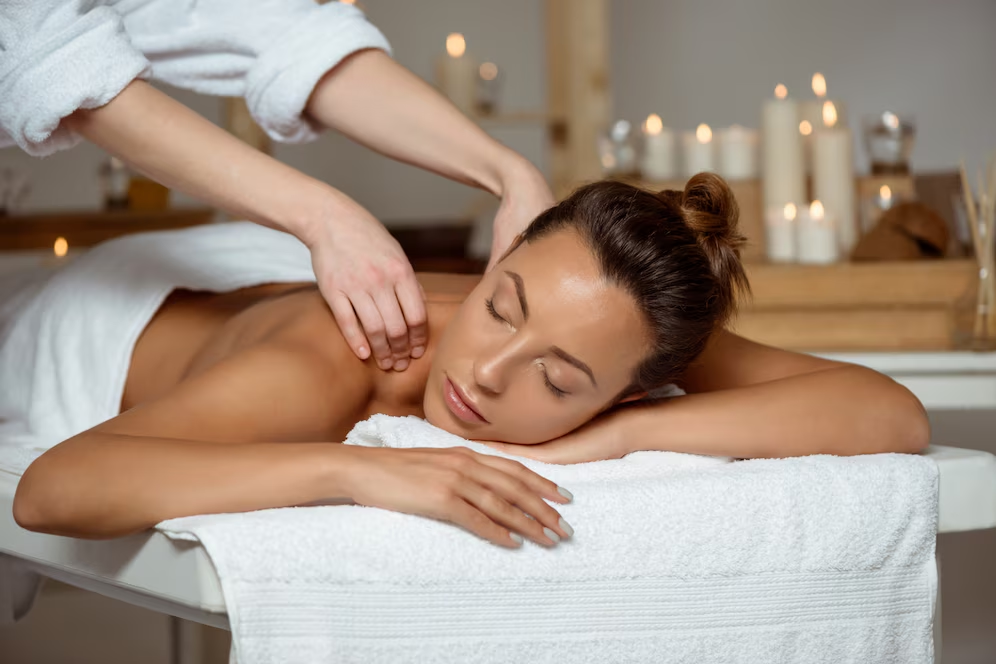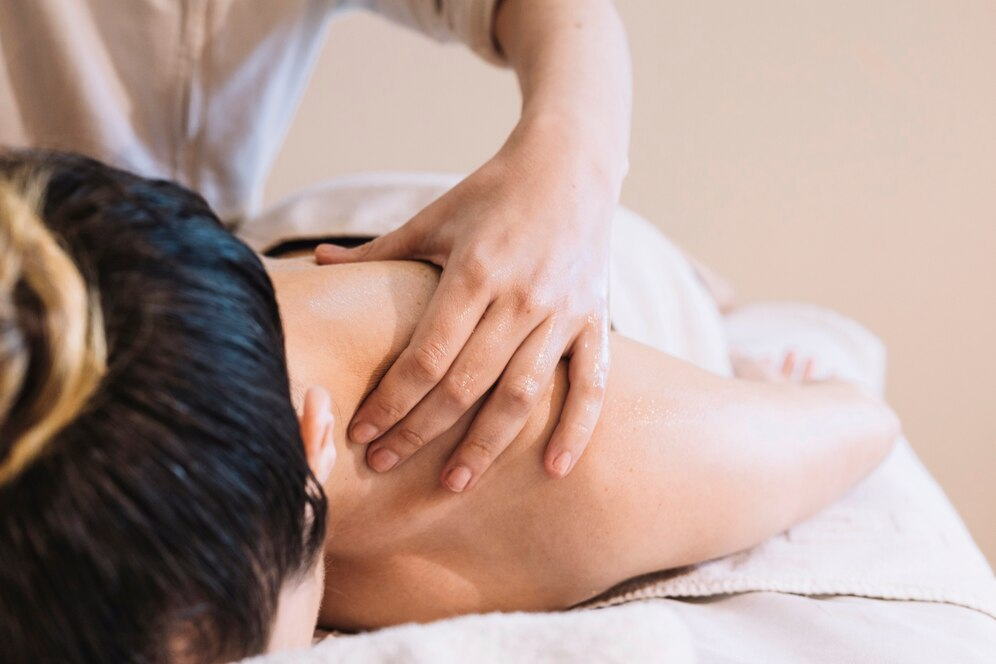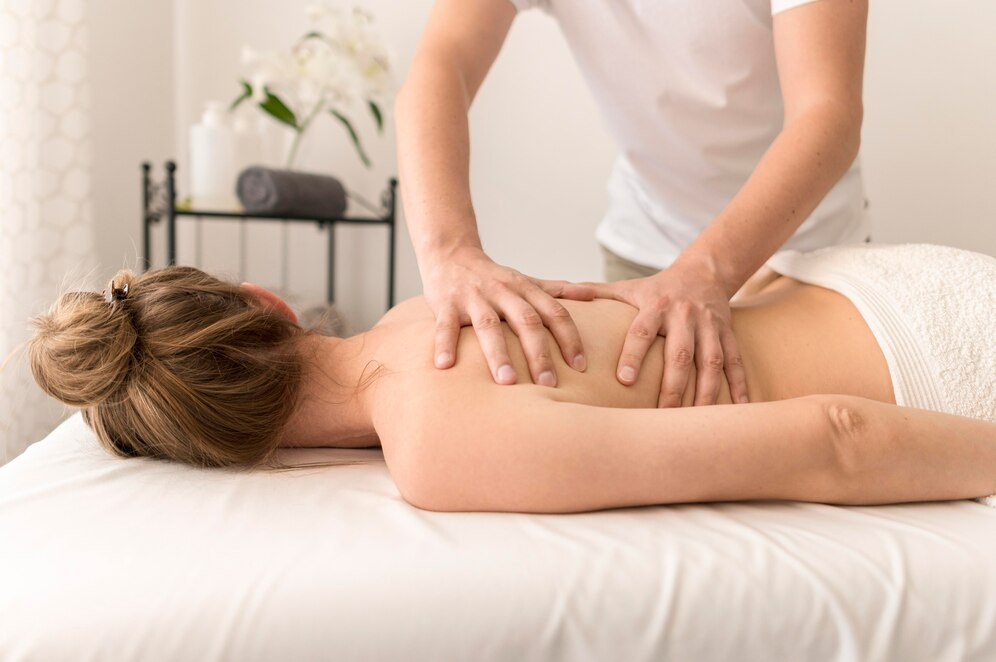
Through its ability to profoundly affect not only physical wellness but also mental wellbeing, massage therapy has captured dramatic attention. This ancient healing is wedded with modern therapeutic practice, making massage a holistically healthy form of therapy. Massage serves to reduce tension and decrease pain in relation to relaxation both for the body and mind. Effects of massage therapy all the way from relieving muscle tension to improving circulation stand beyond mere relaxation; thus, it is an extensively powerful tool for improvement in health and quality of life in general.
Understanding Massage Therapy
Definition and Types of Massage Therapy
Massage therapy involves manipulating muscles, skin, and tendons using pressure from various sources. Apart from being an old healing method, this scientific approach is supported by scientific research to help people stay healthy. Some massage varieties include:
- Swedish Massage: With its soft strokes and rubbing movements, Swedish massage reduces anxiety, improves nutrient circulation in the body, and releases muscle tension.
- Deep Tissue Massage: This method uses slower but more forceful strokes to get into deeper muscle layers and connective tissue. This is mostly done in order to treat muscle injury arising from sports-related activities.
- Sports Massage: A combination of techniques are employed in sports massage that not only prevents injuries but also treats them whenever they occur while at the same time enhancing athletic performance and reducing recovery period.
- Reflexology: Working with pressure points located at the hands, feet or ears helps reflexology restore energy balance throughout the entire body system hence mostly used for relaxation purposes to alleviate stress.
- Other Forms: There are many others such as aromatherapy which entails the use of essential oils during massages or shiatsu which is a Japanese technique involving rubbing fingers on certain parts to open energy channels.
The Historical Background of Massage Therapy
Massage therapy has an ancient origin. The history of massage therapy began more than 5,000 years ago with its early practice by the Egyptians, the Chinese, and others in India. In China, it is referred to as Traditional Chinese Medicine while in India, it was part of the science of Ayurveda.
The Greeks and Romans later adopted massage therapy for relaxation and healing purposes; they applied it for enhancement of physical performance and recovery. It developed and formed into a precise treatment modality utilizing various techniques as a modern massage therapy brings ancient understanding to integrate it with modern application while giving a holistic and well-rounded treatment of many health conditions.

Basic Principles and Techniques of Massage Therapy
Massage therapy is the art of soft tissue manipulation to attain relaxation, pain relief, and an improvement in physical well-being. Some major techniques employed include effleurage or long strokes, petrissage or kneading, and friction or deep circular motions. Such methods are employed in order to enhance circulation, as well as the relief of muscle tension, and stimulate healing.
More popular kinds of massage are Swedish massage, deep tissue, and sports massage. Some foundational concepts are seen in the idea of the body-mind connection, where massage helps to relieve both physical unease and stress. Pressure on specific areas to release tension, increase flexibility, and promote overall recovery are some applications of a massage by a therapist.
Healing Benefits of Massage Therapy
Physical Health Benefits
Certainly, massage therapy has been confirmed over time not only for its calming effect but also for numerous health benefits:
- Muscular Pain and Stiffness Reduction: Consistent massages can ease muscle tension or pain, especially if you have long-term conditions such as chronic lower back pain or arthritis.
- Enhanced Mobility and Flexibility: Muscle, connective tissue, tendon and ligament work done by massage can increase your range of motion making you more flexible hence facilitating better general mobility.
- Improved Recovery from Physical Injuries: It is common to include a massage in injury rehabilitation plans. This will help with blood circulation as well as lymph flow, thus accelerating healing while minimizing the recovery period.
Mental Health Advantages
The significance of the psychological benefits of massage is alike:
- Reduced Stress and Anxiety Levels: In fact, this technique can lead to lower levels of cortisol while dopamine and serotonin levels are increased, thus relieving stress and anxiety.
- Improved Sleeping Patterns: The calming effects of massages on sleep are acknowledged to result from its impact on delta waves in the brain which assist deep sleep.
- Depression Implications: Persons undergoing depression can benefit from frequent massaging sessions since their mood will be boosted as well as their anxiety levels reduced.
Long-term Health Prospects
Massage therapy guarantees long-term health results:
- Strengthened Immune System: Massage therapy helps enhance your immune system by stimulating lymph flow that defends against disease-causing organisms hence minimizing your chances of illnesses.
- Better General Circulation: Better circulation means the improved supply of blood across all body organs, translating to more oxygen and nutrients going into cells.
- Preventive Medicine Role: Regular massage sessions may help a great deal in overall maintaining good health since they can catch such changes that can be felt.
Step-by-Step Guide: What Does a Massage Therapy Session Entail?
A usual session will be a consultation by the therapist in determining the health needs and what you want. You will be asked to lie on a massage table that is very often covered with a sheet for comfort and modesty. Techniques can be effleurage or deep tissue work with oils or lotions applied on tense and painful areas.
Pressure levels may vary from one massage provider to you and your preferences although commonly in types of massages done. The session is closed with post-massage care recommendations, hydrating and stretches to keep the benefits for a longer time.

Scientific Insights: What Does Research Say About Massage Therapy?
Several studies have proven the wide-ranging benefits of massage therapy. It can be particularly appreciated for its stress reduction, pain management properties, and improving the function of circulation. Studies also show that massage has the ability to decrease cortisol levels, because frequent massages enhance mood and relaxation.
Again, more research proves that massage helps the patient deal with diseases like fibromyalgia, arthritis, and recovery after muscle injury. Also, during a session, the release of endorphins gives a natural pain relief mechanism. Even if some claims call for further studies to be confirmed, the bulk of scientific evidence is proving massage therapy to be an excellent complement in both physical and mental health treatments.
Debunking Common Myths and Misunderstandings about Massage Therapy
There is that common myth around the understanding that massage therapy is only set forth for relaxation. While it is most definitely relaxing, massage therapy also has health-related benefits, including the management of pain and flexibility. Another belief is that deep tissue masses must hurt; conversely, an experienced therapist is able to apply pressure without causing discomfort.
Many still believe that massage is inappropriate or potentially unsafe if used for specific conditions, but most people can benefit from massage if a qualified therapist is used. To put it in a nutshell, many people misconceptualized that massages only benefit the body, but it also holds crucial effects in lessening one’s stress and anxiety.
Selecting the Right Practitioner: How to Find a Qualified Massage Therapist
Finding a qualified massage therapist entails several things. For starters, a good practitioner should have formal training from a recognized institution and be licensed to practice in your area. Find therapists specializing in the massage type you would like to receive: Swedish, deep tissue, or sports massage, for example.
Reviewing comments and asking around for personal recommendations can also help. The good therapist will make sure he understands what specifically concerns or afflicts you so that he can customize the session in the best manner to provide safety and effectiveness while in treatment.

Massage Therapy in Combination with Conventional and Complementary Therapies
Massage can be added to the standard medical treatments. It goes very well when applied with physical therapy, chiropractic treatment, and acupuncture to reduce the discomfort and promote recovery from pain. For instance, patients who undergo rehabilitation after surgery or who have chronic diseases such as arthritis may really benefit from massage therapy to facilitate ease and comfort of movements.
It also works compatible with other mental therapy treatment, like psychotherapy, by reducing levels of tension and stress among the patient. The inclusion of massage therapy in a multi-model treatment scheme will add value towards global wellness and provide a basis for full recovery. Therefore, massage will be endorsed both as a traditional and alternative therapy.
Conclusion
The benefits gained from taking a massage go way beyond rejuvenation only since it affects physically healthy bodies, mental alertness, emotional stability, even interpersonal relations as well. This versatile approach to health that works whether independently or along other methods of treatment hence making it accessible to all people.

